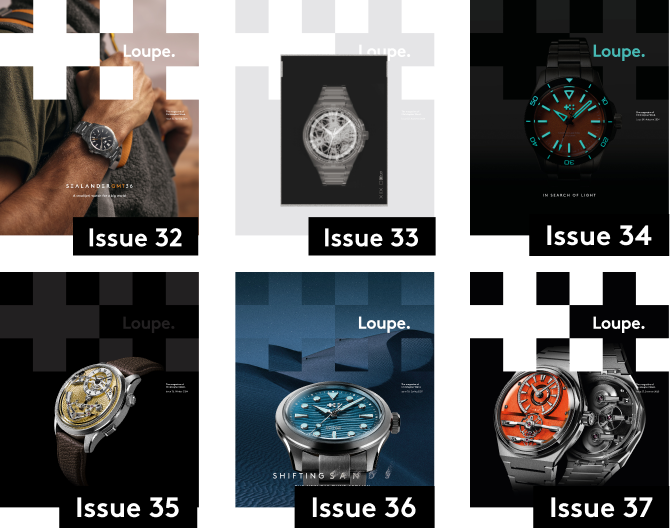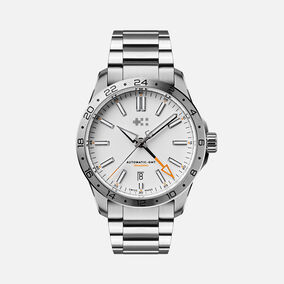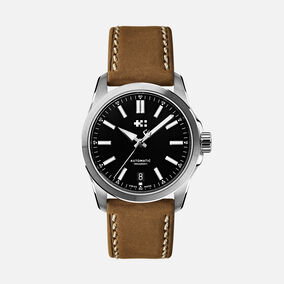Silicon Valley may be home to the world’s most innovative tech companies, but among its workers, a love of mechanical watchmaking has blossomed. Here, Loupe investigates a very Californian love story
Watches have always been symbols of prestige among certain groups.
For today’s young bankers, Pateks, Rolexes and Omegas reign supreme: symbols of wealth and taste that don’t draw too much attention in board meetings. Sports stars like Rafael Nadal and Cristiano Ronaldo often wear Richard Mille one-offs, while rappers and pop stars go for ultra-modded versions of the classics: witness Drake’s emerald-covered Patek Philippe Nautilus.
But one group you wouldn’t naturally associate with mechanical watches are digital workers or, to use the current term, ‘tech bros’. While Apple’s visionary boss Steve Jobs could afford the world’s greatest watch collection, he made do with a plain Seiko quartz three-hander that signalled nothing but the time.
Today, the situation has changed. Silicon Valley tech bros are piling into watches in the way they piled into dot.com stock in the late ’90s. At the same time, newspapers and websites run pieces on the horological preferences of internet entrepreneurs (Jeff Bezos is an Omega man, for your information).
So what happened? Anyone interested in watches knows the prices of Rolexes rocketed during the pandemic as people with an abundance of time and money weighed in on fancy timepieces. Instagram was instrumental in this, delivering a stream of gorgeous watches at the swipe of a thumb, while YouTube became the place to find expert reviews. Then there was the watch that many speculated would finish off the job on mechanical watches that the quartz crisis of the 1970s started.
“I think it started with smart watches,” says John Hsieh, a program manager in Silicon Valley and aspiring watch collector. “Most people I know who weren’t watch guys or gals got into mechanical watches because they became used to wearing a watch but wanted something that wasn’t disposable and could be dressed up for formal occasions.”

“Silicon Valley is full of geeks, and our shared love of watches is a gateway to fulfilling community connection”
Another watch fan in the Valley is Andrew Petrie, who produces video games for Netflix (though he’s also a distillery advisor). He believes the popularity of watches is down to several factors.
“Cynically, social media can play a part in it,” he says. “We’re constantly exposed to algorithms tailor-made to exploit our passions and keep us in a Stockholm-like relationship with our devices. If you look at one watch on Instagram, your entire feed is filled with them. Each time dopamine fires into your synapses, that’s a potential sale.”
Both Andrew and John got into watches before the current trend began. John fell for a Rolex Sea Dweller an engineer wore in his previous oceanography career, while Andrew accompanied his dad as he scoured the pawn shops of the US looking for pocket watches. Both stress the importance of family in their hobby, with John keen to pass his collection on to his children. And it’s this emotional bond that the likes of the Apple Watch will never achieve. After all, even the most powerful new model will be redundant within five years.
“What drove watches becoming a ‘thing’ is that each of the last few SV companies I’ve been at already had an existing internal group of watch enthusiasts,” says Andrew. “Silicon Valley is full of geeks of every shape and size, and our shared love of watches is another gateway to fulfilling community connection. While some might like the juxtaposition of analogue versus digital, I find that’s only a piece of the puzzle. It can be summarised as a collision between passionate interests and a sense of community.”

In the same way that some tech bosses famously don’t let their children play with iPads or smartphones, tech workers buy watches because they perform only one function: telling the time. No alerts. No heart rate monitor. No endless notifications.
“We live in a digital age where we’re constantly bombarded with ads and info,” says John. “So having a mechanical watch on my wrist is therapeutic – time slows down when I glance down and remember to breathe.”
This trend has been noticed at Christopher Ward’s Bespoke department, which works with organisations and businesses to create unique watches tailored to their culture.
“Our part of the business has seen a huge increase in tech workers purchasing from CW,” says Peter France, manager of CW Bespoke. “Over the last 12 months, we’ve worked with watch-collecting groups inside some of the world’s biggest tech businesses. There’s something unique about creating a watch with their peers that they can wear daily but also a keepsake that reminds them of a period in their life. They like the affordability, too!”
The final word goes to Andrew Petrie. “Mechanical watches are tiny engineering marvels,” he says. “There’s a romance to the art of watchmaking where form and function meet aesthetics in a way that resonates with me. A watch is a practical canvas that can serve a critical purpose or simply as a means to share your personality. That’s to say nothing of the historical significance of horology and timekeeping, which is endlessly fascinating.”
And you don’t have to work in Silicon Valley to understand that.
For more on CW Bespoke, go to christopherward.com/bespoke-watchesRelated watches

Sign up to Loupe magazine
Loupe is Christopher Ward’s quarterly in-house magazine. If you want to know what’s happening at CW (and you love great journalism), this is where to start. Alternatively, you can read all our back issues on your computer, tablet or phone.
Order your free copyRead Loupe online



